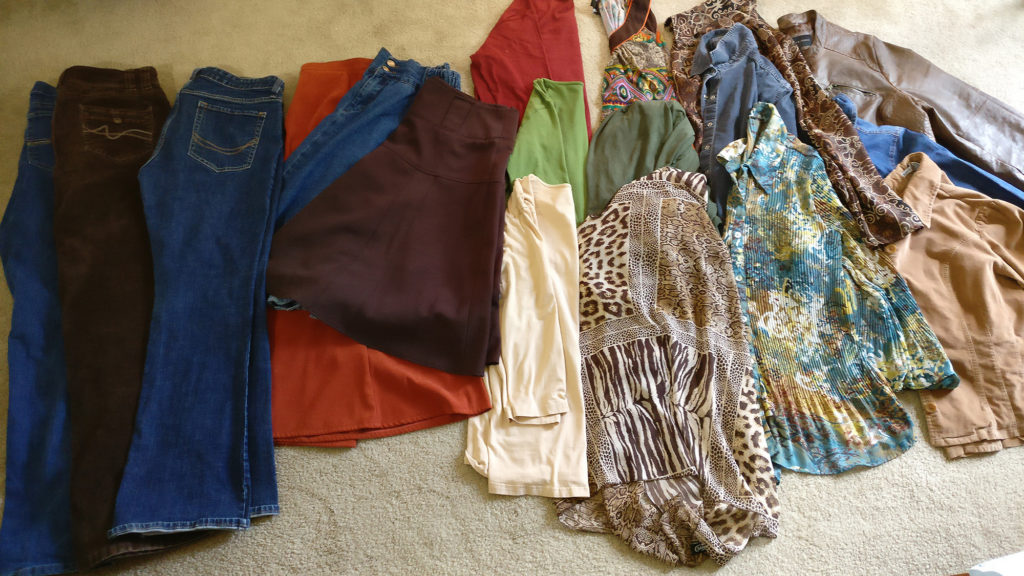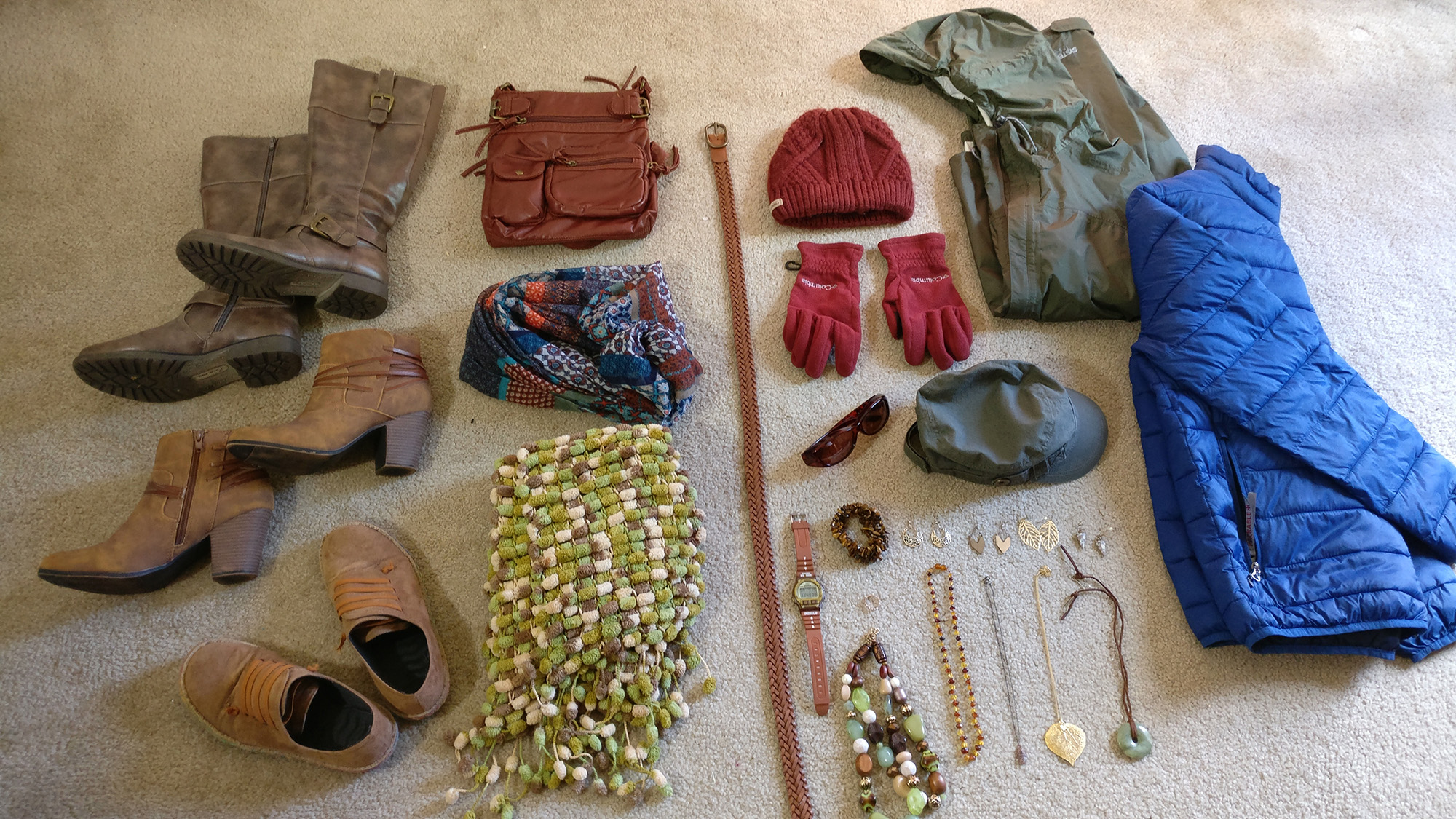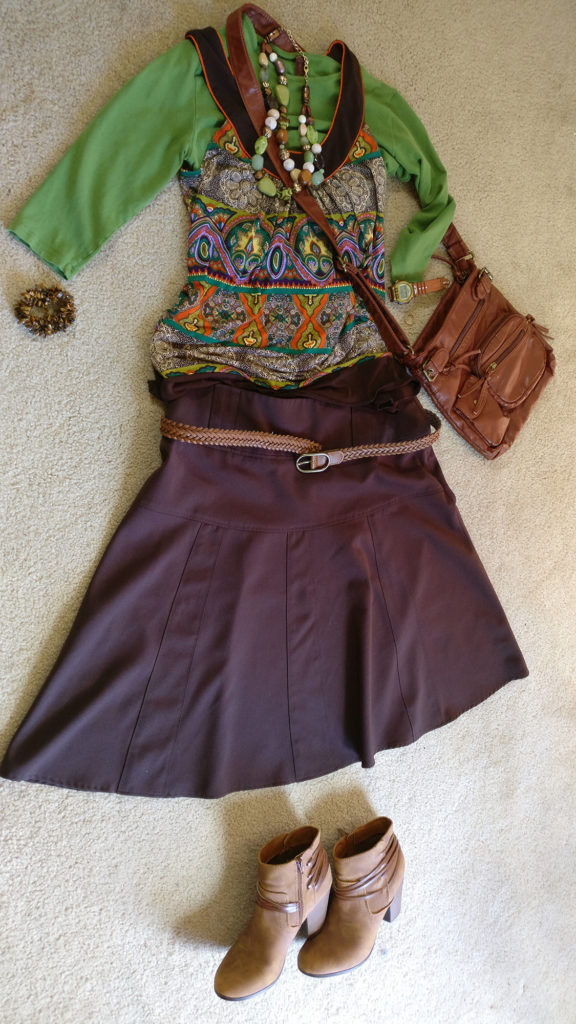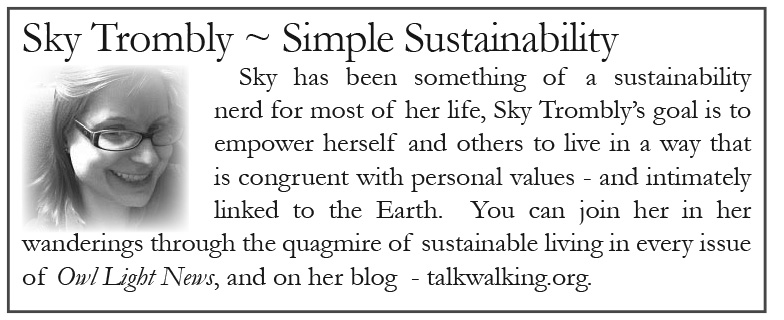Simple sustainability: Final thoughts on minimalist wardrobes
by Sky Trombly –
Many aspiring minimalists will begin by tackling their closets. In fact, the now famous “KonMari Method” begins with clothes and then proceeds on in an orderly fashion to other categories of stuff.
I happen to (mostly) agree with Marie Kondo on this aspect of decluttering. Clothing is an excellent area to begin the process of evaluating and downsizing your lifestyle because:
- everyone (regardless of gender, location, or socio-economic class) wears clothes and keeps some kind of wardrobe
- the clothing and fashion industry is one of the most environmentally destructive industries and right-sizing our consumption can have a tremendous impact
- it is an easy way to try on the benefits of minimalism without disrupting your home and housemates
I started with my closet in my minimalist journey for these reasons. I learned a lot in the process, but the process that I went through was extremely messy and time consuming. I was lost to a sea of theory: capsule wardrobes, minimalist uniforms, the KonMari Method, dressing seasonally, for body shape and coloring and so on. Plus, during the process I was pregnant and post-partem and had fluctuating weight. It certainly wasn’t smooth sailing.
Ultimately, I did feel successful, though. Everything I tried presented new discoveries about myself and I grew a lot. Here, I hope to streamline the journey for others who want to right-size their own closets, but don’t want to spend a tremendous amount of time doing so.
Don’t Start With Throwing Things Away!
The KonMari Method has individuals pick up one (clothing) item at a time in order to determine whether it “sparks joy”. You return whatever “sparks joy” to your wardrobe (typically after folding it in a special way, but for more on this, I recommend her books or the Netflix docuseries cited below).
Anything that doesn’t “spark joy” gets thanked and sent away to be donated or whatever seems most appropriate. In the end, there is no minimum or maximum number and someone who uses this method may not end up down-sizing much at all.
Or, down-sizing too much. Which is my main concern with this method. You could, theoretically, not like anything you own, but still need to get dressed the next day. Throwing stuff out just to replace items is wasteful. And most of us can’t afford to buy a whole new wardrobe.
Some of us may come to the project without a firm grasp on our personal style or the roles we need to dress for.
Furthermore, I find “sparks joy” to be a nebulous concept that may work for some people but not for everyone. Even though she allows for “recognizing usefulness” to be included in the concept of joy, we might not be that emotionally invested.
I think some initial evaluation of what we already have, what we need, what we like, and what our goals are is an important step before we actually toss our belongings.
Step 1: Reacquaint Yourself with Your Wardrobe
Separate out your “heck, yeses”. Those items you wear frequently, love, that even might “spark joy” for you. Or, if you’re a little more on the pragmatic side, those items that you reach for most often. You don’t have to sweat getting every single piece because this step is just about gathering intel.
Hang them or lay them out together somewhere so that they are separated from the closet clutter. What do you like about these pieces? How do they fit on your body? What colors and patterns do you gravitate toward? Do you prefer natural materials or synthetic? Opaque pieces or sheer? Do you enjoy layering? What is your go-to outfit configuration? Do you wear a blouse and jacket with slacks? Or are you a t-shirt and jeans kinda person?
Then, grab a bunch of “heck, noes”. The sort of clothes you wear on laundry days or keep out of guilt. Again, don’t sweat getting every last one, that step is coming later.
Ask yourself: what isn’t working? Is it the color, pattern, shape, size, the way it doesn’t go with anything else? And so on.
You know you don’t like these, so don’t put them back in your closet. Set them aside for now, but don’t get rid of them just yet. You might find you need to keep a few in order to maintain an adequate closet size or to fulfill a role within your wardrobe (at least until you can reasonably upgrade).
Until very recently, I would put on clothing in the morning come downstairs and within a couple of hours go back up to change (sometimes changing more than twice in a day). I knew that I wasn’t comfortable, but I never spent a lot of time evaluating why it was. My behavior didn’t go unnoticed. It was a tendency widely recognized by my family members and sort of an ongoing joke.

When I started to consciously clue in on my preferences, this frustration went away and changing became a once-a-day phenomenon.
We’re all individuals, but I will tell you what I’ve learned about myself as an example:
I prefer plain, simple, and practical clothing without a lot of fussy ornamentation. I don’t want to have to fidget, tuck in, and avoid certain positions in order to remain decent and “put together”. Therefore fit is also paramount. My favorite sleeve length is ¾-sleeve because it doesn’t get in the way of what I am doing. I keep some full length layers for warmth, but they tend to end at the wrist – no flowy bell sleeves, thank you.
I found out that I actually prefer plain clothing and prefer colors like: blues, teals, various greens and dark reds, tans, camels, and browns. I also love a dark wash blue jean. I have a few patterned things that are a tad dressier for more special occasions and I have a collection of costumes.
My go-to outfit for home is a pair of jeans and a ¾ sleeve t-shirt (or tank top in the summer). When I leave the house, I usually add a belt, a pair of shoes to suit the occasion, and a light jacket or button-down shirt to look a little more polished. I work from home and I look after kids so my outfit matches my lifestyle. I also have a few elements that I can pair with my uniform for a more business-casual look when I am teaching, giving presentations, celebrating and so on. At night, I wear my ¾ sleeve base layer to bed and a pair of leggings. When I wake up, I exercise in this before showering and getting dressed for the day.
This solution works wonders for me and I hope that it can inspire a more custom fitted approach for you.
Step 2: Consider Your Method
There are two main schools of thought for minimalist wardrobes: a minimalist uniform and a capsule wardrobe. It is important to consider which suits you best.
A Minimalist Uniform
If you’re not a clothes person, not interested in fashion, or you don’t derive pleasure from designing outfits, I recommend trying a minimalist uniform. You can tell if this method will work for you by thinking about your habits. If you often pair the same shirt with the same pants and don’t tend to mix and match, then this is a sign that a minimalist uniform might be right for you.
The minimalist uniform is great for allowing you to look decent without having to put much thought or energy into your clothes. This practice has been touted by people like Steve Jobs and former president Barack Obama. It is a solution that has a stereotypically masculine appeal. Though there are definitely women, including myself, that find this solution useful.
A minimalist uniform can be tailored to your personal tastes. You consider your go-to outfit combination (whether a black turtleneck and blue jeans, or a blue/gray suit) and then you stock up on the elements you need to recreate that outfit for the week. The actual numbers depend upon the distance between laundry days and your ability to re-wear certain items.
The uniform can be very exactly replicated (the same brand’s t-shirt in the same colors) or loosely (t-shirts that you’ve collected over the years).
Since I didn’t want to go out and buy a whole lot of new items for my uniform, I selected stuff from my inventory, even stuff that didn’t quite “spark joy”. As I replaced items that wore out, I replaced them with pieces I now knew I could really like.
A Capsule Wardrobe
Not everyone wants to wear the same thing day in and day out. Many people derive real pleasure from mixing it up for greater flair and flexibility. These are the people who benefit from capsule wardrobes.
Capsule wardrobes are collections of clothes that are curated for the owner’s true tastes and allow for varied combinations. This creates the illusion that the owner has more than s/he actually does.
For example, a pair of slacks in a neutral color could pair with several of the shirts in the wardrobe or have accessories and outer layers added or taken away to create a huge variety of looks.
It is an elegant solution for fashion-minded people on a budget or keeping their lives green.
There are numerous approaches to capsule wardrobes, including the famous Project 333 (33 items for 3 months) and if this speaks to you, you’ll easily be able to find information regarding capsule wardrobes online.
Step 3: Strategize
Now that you understand your likes and dislikes and your preferred method of building a wardrobe, I recommend considering the following questions:
- How do you spend your days? Do you require business attire or more casual clothing or both? What kinds of things will get in your way and what will serve you best? Do you work with your hands? Need sturdy clothes? Or need to look professional to get that promotion?
- Do you obviously have too few of something? Are you frequently running out of underwear between laundry days?
- Speaking of which, how often do you do laundry? What is the minimum number of clothes that you can get away with? (You might be able to re-wear your pants, but not be interested in re-wearing your underwear so stock up on those!)
- How closely does your current wardrobe fit your ideal? What do you think you’ll need to buy or get rid of?
If you’re considering creating a minimalist uniform, what does it look like? And if you’re considering a capsule wardrobe, what pieces seem to fit best with each other?
Step 4: The “Spark Joy” Test… Modified.
Now is the time to declutter. You can begin by picking up each piece and if the “spark joy” concept works for you, begin eliminating those things that don’t bring you joy. Now that you have a firmer picture of your likes/dislikes and you’re armed with a vision, this should be easier and more productive.
For those of you who don’t resonate with the “spark joy” concept, I recommend using numbers. If you need 6 pairs of jeans for your ideal wardrobe, but have more, then pick out the very best 6 and put them in your wardrobe. Work through the relevant categories: base layer shirts, jackets, button-downs and even socks and underwear.
Also, make sure you try on the clothes you decided to keep. If you are depending on a pair of pants for your wardrobe, they need to fit you now.
Once you’ve decided on your wardrobe plan, decluttered clothes that don’t suit you, and tried everything on, there is one final method to try. Flip all your hangers the wrong way and demarcate your clothes in drawers and other containers. After you’ve worn your clothes for a day, do a check in. If you really liked your clothes, wash and rehang them (flipping the hanger around or put them in the “keep” side of your drawers). In about a month, you can reevaluate your wardrobe. Anything that remains unworn is probably superfluous or requires an upgrade.
This is the best possible time to make smart purchases. You’ve done the initial work and had the proof of a month to judge what you really need.
A Final Word
I know all this seems like a lot of work. It is. The nice thing about going through this process is that you will get crystal clear about your preferences and needs. Going forward, you’ll have a valuable tool and even if you experience a career change or other lifestyle upheaval, you won’t be starting from scratch.
I have experienced some great benefits: I make fewer purchasing mistakes, fashion faux-pas, take fewer trips to my closet, always have enough clothing, no how to pack when traveling, and feel comfortable all day long.
It is my hope that I can spread some of this simple joy.
Until next time, live simple and shine brightly!
Kondo, Marie. The Life-Changing Magic of Tidying Up: The Japanese Art of Decluttering and Organizing.
Kondo, Marie. Spark Joy: An Illustrated Master Class on the Art of Organizing and Tidying Up.
Tidying Up with Marie Kondo (2019 Docuseries by Netflix)
